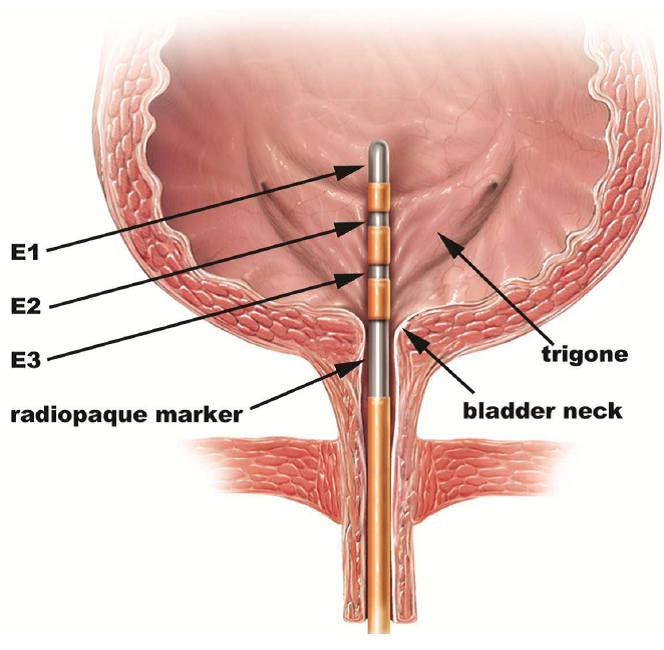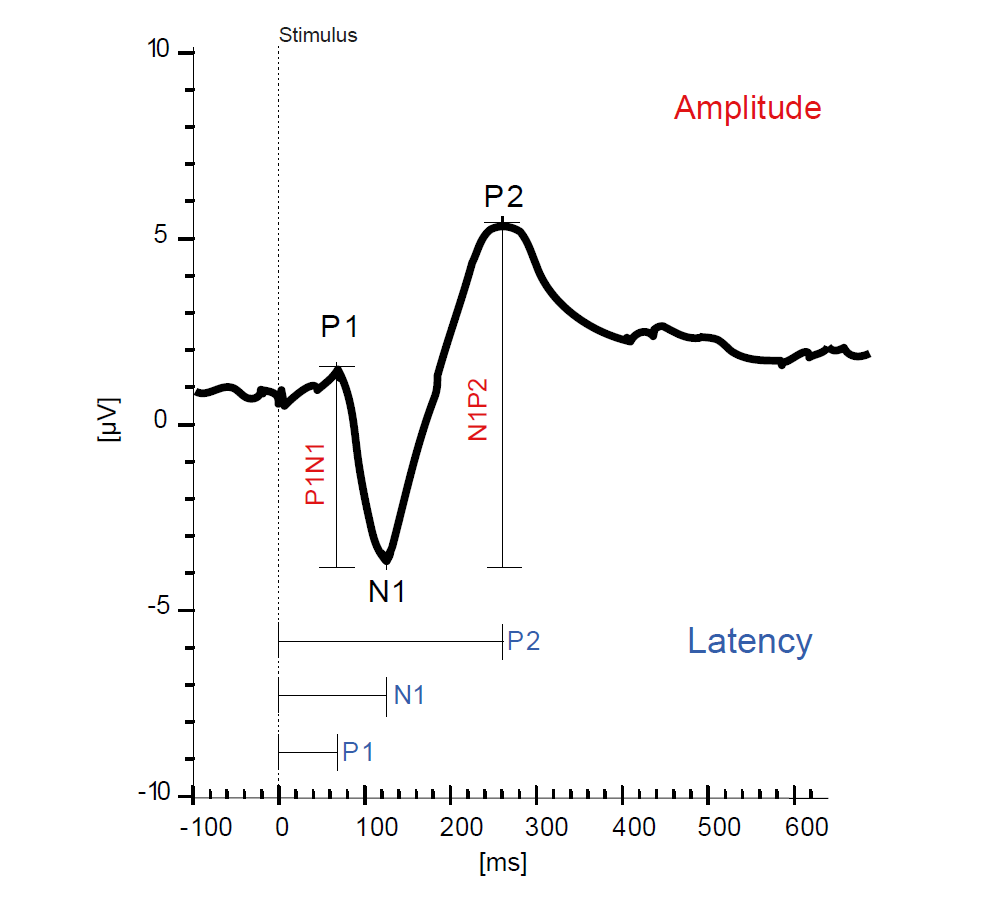Evaluation of new approaches in the treatment and neurophysiological assessment of healthy and impaired human lower urinary tract function
Project leader: Dr. Ulrich Mehnert
Figure 1: Schematic illustration of custom-made catheter in position for trigonal stimulation in female LUT.
There is currently no objective and reliable clinical assessment tool of human bladder and urethral afferent nerve function and integrity available. Such an assessment tool would enable a greater understanding of the role of sensory nerves in lower urinary tract symptoms (LUTS) (i.e. overactive bladder). Recording of sensory evoked potentials (SEPs) is an established and recommended diagnostic instrument to assess the functionality of afferent nerve fibres. During repetitive stimulation of a nerve or a dermatome, SEPs can be recorded at certain electrodes placed above the sensory cortex. The clinical utility of SEPs is based on their ability to reveal abnormal sensory function, when findings from previous investigations (i.e. history, neurologic examination, urodynamics) are equivocal.
Objectives: It is the goal of the study to refine the methodology of lower urinary tract SEP measurements. In a second step we aim to implement the optimized methodology into clinical practice to use it as an objective marker of pathological LUT conditions.
Figure 2: Example of a cortical LUTSEP recorded at Cz with the markers of the P1, N1 and P2 peaks and the corresponding latencies and peak-to-peak amplitudes.
Importance and impact of the study: This project will advance a more precise assessment of LUT function with special focus on afferent function. The results of this project provide important information for a future segmental assessment of human LUT spinal and peripheral neuronal control. This is of clinical importance as it would contribute to a better specification of the underlying mechanism of LUTS in individual patients (i.e. neurogenic lesion of afferent pathways vs. organ related hypersensitivity without impairment of afferent fibers) and thus improve selection of an appropriate therapy.
Publications:
-Gregorini F, Wollner J, Schubert M, Curt A, Kessler TM, Mehnert U. Sensory evoked potentials of the human lower urinary tract. J Urol. 2013;189:2179–2185.
-Gregorini F, Knupfer S, Liechti MD, et al. Sensory evoked potentials of the bladder and urethra in middle-aged women: The effect of age. BJU Int 2015;115 Suppl 6:18–25.
-van der Lely S, Stefanovic M, Schmidhalter MR, Pittavino M, Furrer R, Liechti MD, et al. Protocol for a prospective, randomized study on neurophysiological assessment of lower urinary tract function in a healthy cohort. BMC Urol. 2016;16:69.
-Knupfer SC, Liechti MD, Gregorini F, De Wachter S, Kessler TM, Mehnert U. Sensory function assessment of the human male lower urinary tract using current perception thresholds. Neurourol Urodyn. 2017;36:469–473.
- Knüpfer SC, Liechti MD, van der Lely S, et al. Sensory evoked cortical potentials of the lower urinary tract in healthy men. Neurourology and Urodynamics . 2018;1– 11.
Funding:
-Swiss National Science Foundation
-Swiss Continence Foundation
For further information please contact: Dr. Ulrich Mehnert

